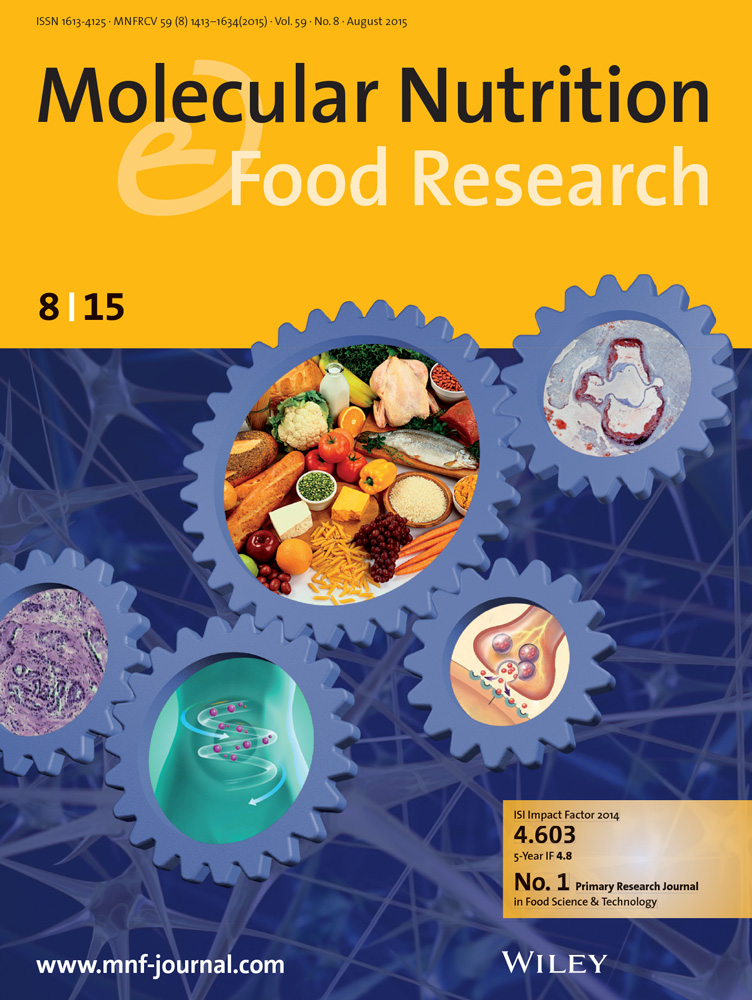Biological Roles of Selected microRNAs in Glucose Metabolism as a Candidate Biomarker for Diabetes Mellitus
IF 4.5
2区 农林科学
Q1 FOOD SCIENCE & TECHNOLOGY
引用次数: 0
Abstract
Type 2 diabetes mellitus (T2DM) is a medical disorder characterized by high blood sugar levels resulting from a lack of insulin caused by impaired activity of 𝛽‐cells and/or the inability of insulin to efficiently transport glucose from the bloodstream into cells, a condition referred to as insulin resistance. This occurs not only in insulin‐sensitive tissues such as muscles, adipose tissue, and the liver, but also in the gastrointestinal tract, which may be caused by a defect in the insulin signaling pathway. MicroRNAs (miRNAs) are RNA molecules that do not code for proteins and play a role in multiple pathways. Several studies have suggested that specific miRNAs could potentially be used as biomarkers for diagnosing diabetes. These miRNAs regulate the formation of pancreatic islets, the differentiation of β‐cells, the secretion of insulin, and the control of glucose metabolism. miRNA‐mediated pathways are associated with human genetic illnesses resulting from mutations in the maturation process of miRNAs. The changes in miRNAs impact their ability to bind to mRNA targets, hence modifying gene expression. This review provides a concise overview of the latest studies investigating the correlation between miRNA expression and the regulation of glucose levels in cases of β‐cell malfunction and insulin resistance.选定的microrna在葡萄糖代谢中的生物学作用作为糖尿病的候选生物标志物
2型糖尿病(T2DM)是一种医学疾病,其特征是由于胰岛素缺乏引起的高血糖水平,这是由于胰岛素活性受损和/或胰岛素无法有效地将葡萄糖从血液转运到细胞中,这种情况被称为胰岛素抵抗。这不仅发生在胰岛素敏感组织如肌肉、脂肪组织和肝脏中,也发生在胃肠道中,这可能是由胰岛素信号通路的缺陷引起的。MicroRNAs (miRNAs)是一种不编码蛋白质的RNA分子,在多种途径中发挥作用。几项研究表明,特定的mirna可能被用作诊断糖尿病的生物标志物。这些mirna调节胰岛的形成、β细胞的分化、胰岛素的分泌和葡萄糖代谢的控制。miRNA介导的途径与miRNA成熟过程中突变引起的人类遗传疾病有关。mirna的变化影响了它们与mRNA靶标结合的能力,从而改变了基因表达。本文简要综述了在β细胞功能障碍和胰岛素抵抗的情况下,miRNA表达与葡萄糖水平调节之间的关系的最新研究。
本文章由计算机程序翻译,如有差异,请以英文原文为准。
求助全文
约1分钟内获得全文
求助全文
来源期刊

Molecular Nutrition & Food Research
工程技术-食品科技
CiteScore
8.70
自引率
1.90%
发文量
250
审稿时长
1.7 months
期刊介绍:
Molecular Nutrition & Food Research is a primary research journal devoted to health, safety and all aspects of molecular nutrition such as nutritional biochemistry, nutrigenomics and metabolomics aiming to link the information arising from related disciplines:
Bioactivity: Nutritional and medical effects of food constituents including bioavailability and kinetics.
Immunology: Understanding the interactions of food and the immune system.
Microbiology: Food spoilage, food pathogens, chemical and physical approaches of fermented foods and novel microbial processes.
Chemistry: Isolation and analysis of bioactive food ingredients while considering environmental aspects.
 求助内容:
求助内容: 应助结果提醒方式:
应助结果提醒方式:


